
Intel Celeron N4120 Benchmark, Test and specs
Last updated:
The Intel Celeron N4120 has 4 cores with 4 threads and is based on the 9. gen of the Intel Celeron series. The processor uses a mainboard with the BGA 1090 socket and was released in Q4/2019. The Intel Celeron N4120 scores 448 points in the Geekbench 5 single-core benchmark. In the Geekbench 5 multi-core benchmark, the result is 1,478 points.
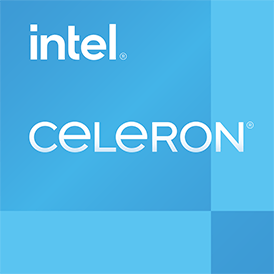
| Name: | Intel Celeron N4120 |
|---|---|
| Family: | Intel Celeron (165) |
| CPU group: | Intel Celeron J4000/N4000/N5000 (11) |
| Architecture: | Gemini Lake |
| Segment: | Mobile |
| Generation: | 9 |
| Predecessor: | -- |
| Successor: | -- |
CPU Cores and Base Frequency
The Intel Celeron N4120 has 4 CPU cores and can calculate 4 threads in parallel. The clock frequency of the Intel Celeron N4120 is 1.10 GHz (2.60 GHz). The number of CPU cores greatly affects the speed of the processor and is an important performance indicator.
| CPU Cores / Threads: | 4 / 4 |
|---|---|
| Core architecture: | normal |
| Cores: | 4x |
| Hyperthreading / SMT: | No |
|---|---|
| Overclocking: | No |
| Frequency: | 1.10 GHz |
| Turbo Frequency (1 Core): | 2.60 GHz |
| Turbo Frequency (4 Cores): | 2.50 GHz |
Internal Graphics
The Intel Celeron N4120 has integrated graphics, called iGPU for short. Specifically, the Intel Celeron N4120 uses the Intel UHD Graphics 600, which has 96 texture shaders and 12 execution units. The iGPU uses the system's main memory as graphics memory and sits on the processor's die.
| GPU name: | Intel UHD Graphics 600 |
|---|---|
| GPU frequency: | 0.20 GHz |
| GPU (Turbo): | 0.70 GHz |
| Compute units: | 12 |
| Shader: | 96 |
| Hardware Raytracing: | No |
| Release date: | Q4/2017 |
| Max. displays: | 3 |
|---|---|
| Generation: | 9.5 |
| Direct X: | 12 |
| Technology: | 14 nm |
| Max. GPU Memory: | 8 GB |
| Frame Generation: | No |
Hardware codec support
A photo or video codec that is accelerated in hardware can greatly accelerate the working speed of a processor and extend the battery life of notebooks or smartphones when playing videos.
| h265 / HEVC (8 bit): | Decode / Encode |
|---|---|
| h265 / HEVC (10 bit): | Decode / Encode |
| h264: | Decode / Encode |
| VP8: | Decode / Encode |
| VP9: | Decode / Encode |
| AV1: | No |
|---|---|
| AVC: | Decode / Encode |
| VC-1: | Decode |
| JPEG: | Decode / Encode |
Memory & PCIeThe processor can use up to 8 GB memory in 2 (Dual Channel) memory channels. The maximum memory bandwidth is 38.4 GB/s. The memory type as well as the amount of memory can greatly affect the speed of the system. |
|
| Memory type: | Memory bandwidth: |
|---|---|
| LPDDR4-2400 DDR4-2400 | 38.4 GB/s 38.4 GB/s |
| Max. Memory: | 8 GB |
| Memory channels: | 2 (Dual Channel) |
| ECC: | No |
| PCIe: | 2.0 x 6 |
| PCIe Bandwidth: | 3.0 GB/s |
Thermal ManagementThe thermal design power (TDP for short) of the processor is 6 W. The TDP specifies the necessary cooling solution that is required to cool the processor sufficiently. The TDP usually gives a rough idea of the actual power consumption of the CPU. |
|
|---|---|
| TDP (PL1 / PBP): | 6 W |
| TDP (PL2): | -- |
| TDP up: | -- |
| TDP down: | 4.8 W |
| Tjunction max.: | 105 °C |
Technical details
The Intel Celeron N4120 is made in 14 nm. The smaller the manufacturing process of a CPU, the more modern and energy-efficient it is. Overall, the processor has 4.00 MB cache. A large cache can greatly speed up the processor's speed in some cases such as games.
| Technology: | 14 nm |
|---|---|
| Chip design: | Monolithic |
| Socket: | BGA 1090 |
| L2-Cache: | -- |
| L3-Cache: | 4.00 MB |
| AES-NI: | Yes |
| Operating systems: | Windows 10, Windows 11, Linux |
| Virtualization: | VT-x, VT-x EPT, VT-d |
|---|---|
| Instruction set (ISA): | x86-64 (64 bit) |
| ISA extensions: | SSE4.1, SSE4.2 |
| Release date: | Q4/2019 |
| Release price: | -- |
| Part Number: | -- |
| Documents: | Technical data sheet |
Rate this processor
Benchmark results

The benchmark results for the Intel Celeron N4120 have been carefully checked by us. We only publish benchmark results that have been created by us or that have been submitted by a visitor and then checked by a team member. All results are based on and fullfill our benchmark guidelines.
Geekbench 5, 64bit (Single-Core)
Geekbench 5 is a cross plattform benchmark that heavily uses the systems memory. A fast memory will push the result a lot. The single-core test only uses one CPU core, the amount of cores or hyperthreading ability doesn't count.

|
AMD A4-6300
2C 2T @ 3.90 GHz |
||
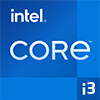
|
Intel Core i3-2350M
2C 4T @ 2.30 GHz |
||

|
Intel Core i3-4030U
2C 4T @ 1.90 GHz |
||
|
|
Intel Celeron N4120
4C 4T @ 2.60 GHz |
||
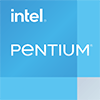
|
Intel Pentium B980
2C 2T @ 2.40 GHz |
||
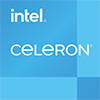
|
Intel Celeron 2950M
2C 2T @ 2.00 GHz |
||
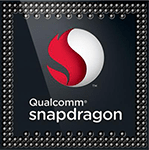
|
Qualcomm Snapdragon 685 4G
8C 8T @ 2.80 GHz |
||
Geekbench 5, 64bit (Multi-Core)
Geekbench 5 is a cross plattform benchmark that heavily uses the systems memory. A fast memory will push the result a lot. The multi-core test involves all CPU cores and taks a big advantage of hyperthreading.

|
AMD A10-5800K
4C 4T @ 4.20 GHz |
||
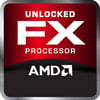
|
AMD FX-4320
4C 4T @ 4.20 GHz |
||
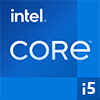
|
Intel Core i5-4258U
2C 4T @ 2.90 GHz |
||
|
|
Intel Celeron N4120
4C 4T @ 2.50 GHz |
||

|
Intel Core i3-2120
2C 4T @ 3.30 GHz |
||

|
Intel Core i5-4278U
2C 4T @ 2.60 GHz |
||

|
Intel Core i3-7130U
2C 4T @ 2.70 GHz |
||
Geekbench 6 (Single-Core)
Geekbench 6 is a benchmark for modern computers, notebooks and smartphones. What is new is an optimized utilization of newer CPU architectures, e.g. based on the big.LITTLE concept and combining CPU cores of different sizes. The single-core benchmark only evaluates the performance of the fastest CPU core, the number of CPU cores in a processor is irrelevant here.

|
Intel Celeron N4000
2C 2T @ 2.60 GHz |
||

|
Intel Celeron N4000C
2C 2T @ 2.60 GHz |
||

|
Intel Pentium Silver N5000
4C 4T @ 2.70 GHz |
||
|
|
Intel Celeron N4120
4C 4T @ 2.60 GHz |
||

|
Intel Pentium E6600
2C 2T @ 3.06 GHz |
||

|
Intel Celeron 3855U
2C 2T @ 1.60 GHz |
||

|
MediaTek Helio X30
10C 10T @ 2.60 GHz |
||
Geekbench 6 (Multi-Core)
Geekbench 6 is a benchmark for modern computers, notebooks and smartphones. What is new is an optimized utilization of newer CPU architectures, e.g. based on the big.LITTLE concept and combining CPU cores of different sizes. The multi-core benchmark evaluates the performance of all of the processor's CPU cores. Virtual thread improvements such as AMD SMT or Intel's Hyper-Threading have a positive impact on the benchmark result.

|
Intel Core i3-2100
2C 4T @ 3.10 GHz |
||

|
Intel Celeron J4105
4C 4T @ 2.40 GHz |
||

|
Qualcomm Snapdragon 636
8C 8T @ 1.80 GHz |
||
|
|
Intel Celeron N4120
4C 4T @ 2.50 GHz |
||
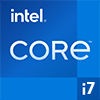
|
Intel Core i7-3537U
2C 4T @ 2.00 GHz |
||

|
Intel Celeron G3930T
2C 2T @ 2.70 GHz |
||

|
Intel Core i3-3240T
2C 4T @ 2.90 GHz |
||
Cinebench R20 (Single-Core)
Cinebench R20 is the successor of Cinebench R15 and is also based on the Cinema 4 Suite. Cinema 4 is a worldwide used software to create 3D forms. The single-core test only uses one CPU core, the amount of cores or hyperthreading ability doesn't count.

|
Intel Pentium Silver N5000
4C 4T @ 2.70 GHz |
||

|
AMD Phenom II X4 940
4C 4T @ 3.00 GHz |
||

|
AMD Phenom II X4 945
4C 4T @ 3.00 GHz |
||
|
|
Intel Celeron N4120
4C 4T @ 2.60 GHz |
||

|
Intel Core i3-2350M
2C 4T @ 2.30 GHz |
||

|
AMD FX-8100
8C 8T @ 3.70 GHz |
||

|
Intel Core m3-6Y30
2C 4T @ 2.20 GHz |
||
Cinebench R20 (Multi-Core)
Cinebench R20 is the successor of Cinebench R15 and is also based on the Cinema 4 Suite. Cinema 4 is a worldwide used software to create 3D forms. The multi-core test involves all CPU cores and taks a big advantage of hyperthreading.

|
Intel Core i3-2350M
2C 4T @ 2.30 GHz |
||

|
Intel Core m5-6Y57
2C 4T @ 2.20 GHz |
||

|
Intel Core m3-8100Y
2C 4T @ 1.10 GHz |
||
|
|
Intel Celeron N4120
4C 4T @ 2.50 GHz |
||

|
Intel Core i3-4005U
2C 4T @ 1.70 GHz |
||

|
Intel Celeron N4100
4C 4T @ 2.40 GHz |
||

|
Intel Core i7-4510U
2C 4T @ 2.70 GHz |
||
iGPU - FP32 Performance (Single-precision GFLOPS)
The theoretical computing performance of the internal graphics unit of the processor with simple accuracy (32 bit) in GFLOPS. GFLOPS indicates how many billion floating point operations the iGPU can perform per second.

|
Intel Celeron 2961Y
Intel HD Graphics (Haswell GT1) @ 0.85 GHz |
||

|
Intel Pentium 3560Y
Intel HD Graphics (Haswell GT1) @ 0.85 GHz |
||

|
Intel Pentium 3561Y
Intel HD Graphics (Haswell GT1) @ 0.85 GHz |
||
|
|
Intel Celeron N4120
Intel UHD Graphics 600 @ 0.70 GHz |
||

|
Intel Celeron J3355E
Intel HD Graphics 500 @ 0.70 GHz |
||

|
Intel Celeron J3455E
Intel HD Graphics 500 @ 0.70 GHz |
||

|
Intel Celeron J4115
Intel UHD Graphics 600 @ 0.70 GHz |
||
Estimated results for PassMark CPU Mark
Some of the CPUs listed below have been benchmarked by CPU-monkey. However the majority of CPUs have not been tested and the results have been estimated by a CPU-monkey’s secret proprietary formula. As such they do not accurately reflect the actual Passmark CPU mark values and are not endorsed by PassMark Software Pty Ltd.

|
Intel Core i7-4510U
2C 4T @ 2.70 GHz |
||

|
Intel Core i3-7020U
2C 4T @ 2.30 GHz |
||

|
Intel Core i7-3687U
2C 4T @ 3.30 GHz |
||
|
|
Intel Celeron N4120
4C 4T @ 2.50 GHz |
||

|
Intel Core i5-4310U
2C 4T @ 3.00 GHz |
||
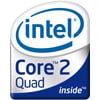
|
Intel Core 2 Quad Q9700
4C 4T @ 3.20 GHz |
||

|
Intel Core i5-3230M
2C 4T @ 2.60 GHz |
||
Cinebench R15 (Single-Core)
Cinebench R15 is the successor of Cinebench 11.5 and is also based on the Cinema 4 Suite. Cinema 4 is a worldwide used software to create 3D forms. The single-core test only uses one CPU core, the amount of cores or hyperthreading ability doesn't count.

|
AMD Phenom II X4 940
4C 4T @ 3.00 GHz |
||

|
AMD Phenom II X6 1035T
6C 6T @ 3.10 GHz |
||

|
Intel Pentium Silver N5000
4C 4T @ 2.70 GHz |
||
|
|
Intel Celeron N4120
4C 4T @ 2.60 GHz |
||

|
AMD FX-9800P
4C 4T @ 3.60 GHz |
||

|
Intel Pentium 3825U
2C 4T @ 1.90 GHz |
||

|
Intel Celeron 3765U
2C 2T @ 1.90 GHz |
||
Cinebench R15 (Multi-Core)
Cinebench R15 is the successor of Cinebench 11.5 and is also based on the Cinema 4 Suite. Cinema 4 is a worldwide used software to create 3D forms. The multi-core test involves all CPU cores and taks a big advantage of hyperthreading.

|
AMD Phenom II X3 710
3C 3T @ 2.60 GHz |
||

|
Intel Celeron G1830
2C 2T @ 2.80 GHz |
||

|
Intel Celeron G1840
2C 2T @ 2.80 GHz |
||
|
|
Intel Celeron N4120
4C 4T @ 2.50 GHz |
||

|
Intel Pentium J4205
4C 4T @ 2.40 GHz |
||

|
Intel Pentium G2020
2C 2T @ 2.90 GHz |
||

|
Intel Core i3-2350M
2C 4T @ 2.30 GHz |
||
Benchmarks

Geekbench 5 (SC)
2,488 entries
2,488 entries

Geekbench 5 (MC)
2,461 entries
2,461 entries

Geekbench 6 (SC)
1,754 entries
1,754 entries

Geekbench 6 (MC)
1,702 entries
1,702 entries

Cinebench R20 (SC)
656 entries
656 entries

Cinebench R20 (MC)
604 entries
604 entries

FP32 SP (iGPU)
2,026 entries
2,026 entries
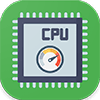
PassMark CPU-Mark
2,391 entries
2,391 entries

Cinebench R15 (SC)
1,106 entries
1,106 entries

Cinebench R15 (MC)
1,101 entries
1,101 entries
Description of the processor
The Intel Celeron N4120 is a mobile processor and has 4 cores with 4 threads. The processor uses a mainboard with the BGA 1090 socket. It comes from the 9th generation of the Intel Celeron series and from the Intel Celeron J4000/N4000/N5000 CPU group. The Intel Celeron N4120 does not use Hyperthreading and cannot be overclocked. The base clock frequency is 1.10 GHz and the turbo clock frequency with one core is 2.60 GHz. When all cores are loaded, the clock frequency is still 2.50 GHz.The Intel Celeron N4120 has an internal graphic called Intel UHD Graphics 600, with a clock speed of 200 megahertz up to 700 megahertz. It has 12 execution units and 96 shaders and has a maximum GPU memory of 8 GB. The internal graphic is from the 9.5 generation and supports DirectX 12, it was manufactured using a 14-nanometer process. The Intel Celeron N4120 can decode and encode h265/HEVC (8 bit), h265/HEVC (10 bit), h264, VP8, VP9, AVC and JPEG and only decode VC-1.
The CPU supports DDR4-2400 type RAM and with the 2 memory channels (dual channel) it has a memory bandwidth of 38.4 gigabits/s. The processor supports AES-NI encryption. The TDP (Thermal Design Power) value is 6W.
The chip design of the processor is monolithic with a Germini Lake architecture. The L3 cache is 4.00 MB. The full x86-64 instruction set (ISA) is supported, so the processor is fully 64-bit capable and supports the following extensions SSE4.1, SSE4.2. The Intel Celeron N4120 was released in the fourth quarter of 2019.
The processor is compatible with Windows 10 and 11, as well as Linux.
In the Geekbench (64-bit, single-core) test, the Intel Celeron N4120 received a total of 452 points, in Geekbench (64-bit, multi-core) 1554 points. The expected result of the PassMark CPU Mark is 2516 points.
Popular comparisons
back to index




